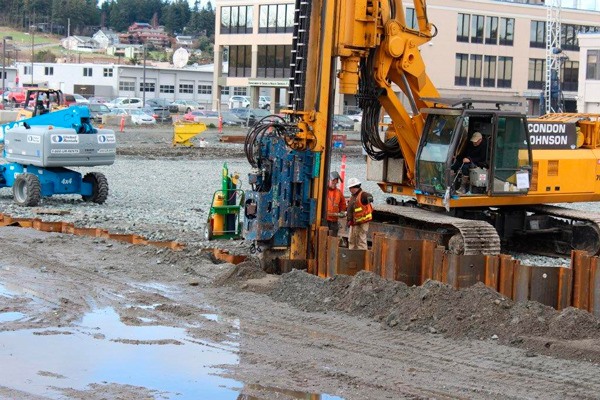Sewer rates for Oak Harbor residents may more than double over the next five years according to a new analysis.
Much of the potential increased cost is to fund the new sewage treatment plant, but it also takes into account maintenance, operation and sewage line replacement.
City Administrator Doug Merriman and Shawn Koorn, of HDR Engineering, presented the City Council Tuesday night with the projections going out five years as well as an ordinance that sets rates for the next two years.
Currently, people in single-family residences pay $64.75 a month in sewer rates.
Under the ordinance passed Tuesday, the rate will increase by 20 percent to $77.70 in 2017; it be $89.36 in 2018, which is an additional 15 percent increase.
The analysis predicts that rates will continue to climb to $135.90 per month by 2021.
Sewer rates for multi-family residences, commercial buildings and schools are also scheduled to increase.
Mayor Bob Severns and Councilman Joel Servatius said they had hoped the rates would be lower, especially with the city’s success in obtaining grants and low-interest loans.

“I will do my best to work with administration to look for ways to keep these rates lower than this $135 figure we’re looking at in 2021,” Severns said. “We’ll have opportunities along the way to potentially do that.”
“Believe me, we’ll be looking at every opportunity.”
The sewer rates that residents pay go into the city’s sewer fund, also known as the wastewater treatment fund. It’s a standalone “enterprise” fund that can only be used for operations and projects directly related to sewage conveyance and treatment.
The city has been increasing rates for years in anticipation of building the new sewage treatment plant. In 2012, the residential rate was $36.52.
At that time, the plant was estimated to cost $93.5 million. Koorn at the time estimated the rates would have to increase to as much as $116 by the year 2020.
Under the new analysis, the estimated cost of the plant ballooned to $115 million, according to Merriman.
Merriman said the number is at the high end of current estimates for the plant, which is currently under construction next to Windjammer Park. The rates won’t have to increase as much if the final cost is less.
City staff was able to obtain $73 million in grants and loans for the project, which helps the rates from going even higher. The city recently obtained $42 million loan Clean Water State Revolving Fund.
The loan has very low interest rate but a 20-year term instead. It would have helped lower rates even further if it had the usual 30-year pay-back period, Merriman said, but it also means the city will be out from under that part of the debt 10 years early.
In all, the city has obtained $77.5 million in federal grants and lower-interest rate loans for the project to date. Merriman calculated that, with the reduced interest rates on the federal loans combined with the no repayment requirement on the grants, the city will save $58.4 million in interest costs over the next 30 years when compared to the option of financing the project solely with municipal bonds.
Oak Harbor’s sewer rate may be higher than neighboring cities’ rates, Merriman said, but the city is ahead of many communities in upgrading sewage treatment to the latest technology.
State and federal laws are increasing stringent when it comes to the quality of treated water that can be discharged into nature.


